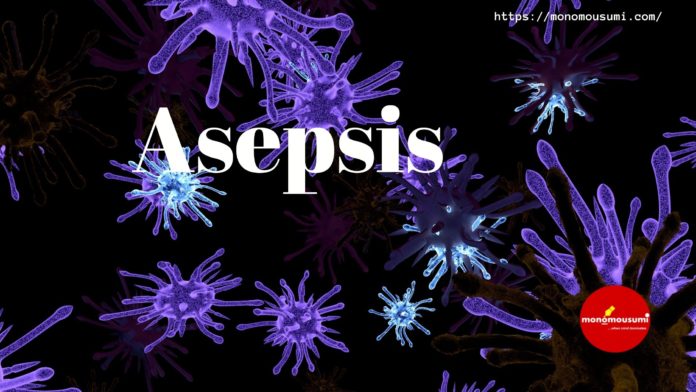Despite advances in surgery and medical technology, infection is still very commonplace in modern times. Luckily, we now have the means to deal with it effectively, ensuring hygiene during treatment and the maintenance of sterile environments. What’s chilling is to think of times when such items and knowledge weren’t available to us – times when the theory of disease and infection was poorly understood, when surgeries (procedures that we now take for granted) were a constant struggle against death. How would we have fared back then?
The Practice of the Barber Surgeon
Undertaking a surgery was a fateful decision back in the day. Qualified surgeons were often ill trained, possessed poor knowledge of anatomy and had minimal understanding of infection or hygienic practice. Some weren’t qualified at all, like the infamous barber surgeons who did procedures ranging from dentistry to bloodletting to amputation. Mortality rates were very high due to aggressive infection and blood loss. Medical knowledge revolved around antiquated ideas like the theory of humours and texts written by Hippocrates and Galen.
Miasma theory
The miasma theory of disease was the widely accepted canon for a long period of time. The theory stated that diseases were caused by miasma, a noxious form of pollution or ‘bad air’ originating from rotting organic matter. It originated and gained traction in Ancient China and Europe until disproved by scientists after 1880, when it was replaced by the germ theory of disease. Miasmata was believed to come from decomposing vegetation, foul smelling water, swamps and urban ghettos. Night air was also considered to be dangerous until the late 19th century. Despite suggestions of diseases being caused by living organisms, people refused to believe the idea until it was proved beyond doubt by Louis Pasteur and his swan-necked flask experiments.
Louis Pasteur
Louis Pasteur was the first to demonstrate that the growth of microorganisms in nutrient broths did not arise through spontaneous generation. He did this by exposing fresh broth to air that had been filtered of dust through the long, convoluted tube of the swan-necked flask. Nothing grew in the broth, proving that the organisms that grew in broth came from the outside environment as spores on dust, instead of being generated spontaneously within the medium as was originally believed. He also performed experiments where he aspirated air through guncotton, dissolved the material in a mixture of ether & alcohol and studied the sediment. It teemed with microbial growth. Adding the sediment to a nutrient infusion caused turbidity, indicating presence of microbial growth. These and other experiments helped Pasteur prove his theory of biogenesis and the germ theory of disease. His many contributions to medicine immortalized him as the Father of Medical Microbiology.
The Saviour of Mothers
Ignaz Semmelweis was a Hungarian physician who pioneered the use of the first rudimentary surgical hygiene methods. While working in the Obstetrics Ward in the Vienna General Hospital, Ignaz was troubled by the fact that there was a higher maternal mortality rate due to puerperal fever in the first clinic compared to the second one. After finding out that the procedures used in both clinics were the same, the only difference being the first clinic was run by medical students, and the second was under the sole operation of midwives.
Semmelweis achieved a breakthrough in his investigation after his good friend passed away after accidental infection from a contaminated scalpel that had been used for post-mortem examinations. His friend’s autopsy showed signs similar to women who had died from puerperal fever. This led Semmelweis to propose a connection between said disease and contamination from cadavers. He confirmed this after finding out that the medical students working in the first clinic arrived there directly after performing autopsies.
This discovery prompted Ignaz to enforce a policy of washing hands in calcium hypochlorite between autopsies and patient examinations, reducing the patient mortality in the first clinic by 90%. Unfortunately, his insistence on cleanliness was largely rejected and subjected to ridicule, eventually leading to dismissal from his post. Twenty years later, he died alone after being savagely beaten by guards in a lunatic asylum.
Joseph Lister
Joseph Lister was a British surgeon by profession, but possessed mediocre surgical skills. His research in bacteriology and infection however, made him a legend in the field of medicine.
While teaching at the University of Glasgow, Lister read a paper published by Louis Pasteur on how food spoilage could occur in anaerobic conditions if microorganisms were present. Pasteur had offered 3 methods for their elimination: filtration, heat or exposure to chemicals. Lister decided to adapt the third method as an antiseptic technique since the first two were unsuitable for human tissue.
After the discovery of phenol (carbolic acid) in 1834, Lister began to test its effectiveness when applied to wounds. He found that wounds swabbed with the chemical were at less risk of developing gangrene. After successfully treating a young boy with a compound fracture in this way, he published a series of articles and ordered surgeons working under him to wear clean gloves, wash their hands and instruments as well as spray the OT in 5% phenol solution before and after surgery. His contributions lead to the rise of antiseptic surgery and safer operating environments.
Silence, Sterilization & the Surgical Gown
Instead of just preventing the possibility of active infection, doctors in the late 19th century began exploring the creation of a state completely free from pathogens. One of the pioneers of this shift from antisepsis to asepsis was Scottish gynecologist Lawson Tait. He implemented strict no-talking policies in his OT, boiled his instruments and limited the number of people in contact with a patient’s wound.
Another key contributor was German surgeon Ernst von Bergmann, the first physician to introduce methods of heat sterilisation and the use of autoclaves in surgery. He also steamed surgical dressings and proved the method superior to chemical antisepsis.
The final step was reached when William Halstead implemented no street clothes policies in his OT, instructing everyone to dress in white duck suits and skull caps. He cleaned surgical sites with iodine and other disinfectants, used drapes to isolate the area and enforced rigorous hand washing rituals in concentrated solutions of permanganate and mercury bichloride. The chemicals were so strong they damaged nurses’ hands, which prompted Halstead to create the first type of surgical gloves with the Goodyear Rubber Company. The gloves soon became a standard of antiseptic surgery.
Thoughts
Nowadays, hygiene and aseptic conditions are industry practice. The idea of surgeries without antiseptics in non-sterile conditions is unthinkable. However, that was the reality that many patients faced less than a century ago.
It is important to remember the countless lives that have been lost to barbaric surgical practice, blatant disregard of basic hygiene, rampant infection and post surgical sepsis. Somehow, in a climatic journey of scientific discovery, of countless trials and errors, of highs, lows, fortune and folly, we have arrived at a place where surgeries are no longer a matter of possible life or potential death.
By Srilakshmi Chidambaram
















